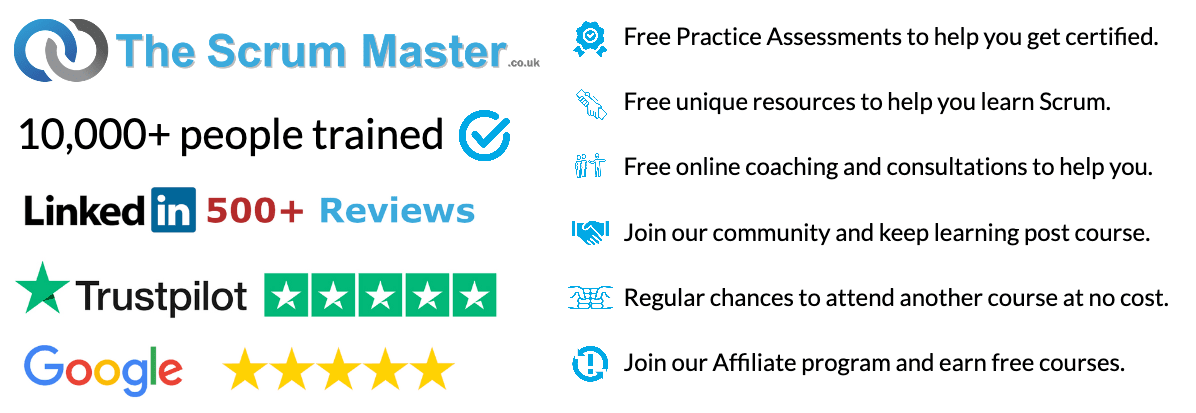 This post continues my ongoing series revisiting the principles behind the Agile Manifesto. This time we are focussing on the following Agile principle – “The most efficient and effective method of conveying information to and within a development team is face-to-face conversation.”
This post continues my ongoing series revisiting the principles behind the Agile Manifesto. This time we are focussing on the following Agile principle – “The most efficient and effective method of conveying information to and within a development team is face-to-face conversation.”
I have always interpreted this principle as a call to focus more on conversations and less on documentation. as a means of communication when developing a product. That is not to say that documentation does not have a place. Scrum requires certain minimal forms of documentation such as the Product Backlog and Sprint Backlog. But when doing complex work, there is a vital need for people to communicate in real-time to exchange ideas, ask questions and increase their collective understanding. I believe the authors were emphasising the benefits of this real-time communication for Developers through this principle.
Back in 2001 when the Agile Manifesto was created it would have been possible to have such conversations over the telephone. However, the Manifesto authors were clear that it needed to be a “face-to-face conversation” which back then would have meant people being together in-person. A telephone conversation does not support non-verbal communication. Body language, voice inflection and eye contact would all not be present and the communication would likely be less effective as a result. It is possible the Manifesto authors recognised these limitations with the wording they chose.
When the Agile Manifesto was created, the only way to carry out face-to-face communication was to be physically together. Zoom, Teams and other forms of easily accessible video conferencing tools did not yet exist. Today we can have face-to-face conversations without being colocated. The Agile Manifesto authors would not have made the distinction. Would they have done so if the Agile Manifesto was being created now?
In-person communication may be inherently better. The fewer barriers there are to communication, the more effective it is likely to be. When communicating in person, the conversation will often be faster. In-person conversation supports building trust and understanding. People can build relationships through the informal conversations that happen freely in this setting and this can help make future communication easier.
 For me, face-to-face has always meant both in-person and online communication. Whilst communication may be more effective in-person, it can still be done well online. The world of work in the 21st century is one where for many organisations, people will not be colocated in an office 5 days a week. Like it or not, we will have to learn how to communicate effectively online to support this shift.
For me, face-to-face has always meant both in-person and online communication. Whilst communication may be more effective in-person, it can still be done well online. The world of work in the 21st century is one where for many organisations, people will not be colocated in an office 5 days a week. Like it or not, we will have to learn how to communicate effectively online to support this shift.
There may be meetings where it is desirable to assemble people in person for the extra effectiveness this may enable. Kick-off meetings where the objective is forming and motivating teams benefit from being carried out this way. Appraisals and other feedback meetings benefit from the extra personal touch of being physically together. Social gatherings have a very different dynamic when they are carried out in person rather than online.
For most other conversations, we will accept that they can be carried out online using suitable tools. Most of the Scrum Teams I work with currently are remote for a significant amount of their time. They are still collaborating, carrying out face-to-face conversations and delivering valuable products. They are finding ways to adapt to the changing working environments they find themselves in. They are “uncovering better ways of developing” products. This first line of the Agile Manifesto is perhaps the most important, but commonly overlooked part.
--
 Hi, my name is Simon Kneafsey and I am a Professional Scrum Trainer with Scrum.org & TheScrumMaster.co.uk. I am on a mission to simplify Scrum for a million people. I have helped over 10,000 people so far and I can help you too.
Hi, my name is Simon Kneafsey and I am a Professional Scrum Trainer with Scrum.org & TheScrumMaster.co.uk. I am on a mission to simplify Scrum for a million people. I have helped over 10,000 people so far and I can help you too.
Learn more at TheScrumMaster.co.uk and signup for our newsletter with 80,000+ practitioners.


